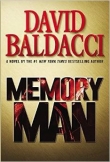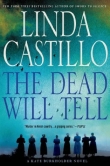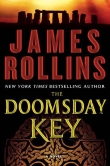
Текст книги "Riptide"
Автор книги: Michael Prescott
Жанр:
Триллеры
сообщить о нарушении
Текущая страница: 8 (всего у книги 20 страниц)
sixteen
The shaken city was a traffic-snarled mess. It took her an hour to reach Sirk’s house in the Hollywood Hills.
Small but immaculately landscaped, the house lay at the end of a cul-de-sac, overhanging one of the canyons on stilts that looked no stronger than matchsticks.
When she rang the bell, the door opened almost at once.
“Jennifer,” Harrison Sirk said with a slightly bleary smile. Though it was only two o’clock, he seemed to have been drinking. “Good of you to come so promptly.”
“My pleasure.” She extended her hand, but he didn’t take it.
“Sorry, I don’t shake hands. Germs, you know. It’s nothing personal.” Weaving a little, he led her inside. “I’ve always been averse to dirt and disease. Hospitals terrify me. All those sick people—frightful.”
The house was uncomfortably warm, the thermostat dialed high. Cats—at least three of them—slinked among a clutter of modernistic statuary and potted ferns. The heat, the profusion of plants, and the glare through the wide windows made her feel she was in a hothouse.
“And yet you’ve been to crime scenes,” she said.
“Oh, crime scenes don’t trouble me at all. I would rather spend two hours at a homicide scene than two minutes in a doctor’s waiting room. I suppose a psychologist could explain why. But then, you’re a psychologist, aren’t you?”
“Don’t worry, I’m not planning to diagnose you.”
“I’m relieved to hear it. There are some depths best left unplumbed. I much prefer to remain an enigma, to others and myself.”
He escorted her into his den, its curtains shut against the light. It was even hotter, and there were two more cats. The walls were crowded with framed book covers—his own, naturally—and photos from L.A.’s past.
She settled on a sofa. He offered her a drink. She declined.
“Now what can I do for you?” he asked as he lowered himself into an overstuffed armchair like a king taking his throne. A cocktail glass rested on the adjacent table, ice cubes melting in what was probably scotch.
“To begin with, you can tell me how you knew I have an interest in Jack the Ripper.”
“I could perhaps convince you that I possess psychic powers, but the truth is more mundane. I’m a regular patron of the Purloined Letter Bookshop. I was in there earlier today. As is my wont, I inquired of the proprietor if anyone had purchased one of my books. He told me he’d made a sale to a charming young lady, who also bought a slew of books on Jack the Ripper. Rather indiscreetly, he mentioned that the lady’s companion had promised to broker a meeting with me. And so I put the pieces together, much like Sherlock Holmes, whose methods were equally unremarkable once explained.”
He picked up his drink and swallowed a third of it in a noisy slurp.
“Maura tells me,” he added, “that you’re a consultant to law enforcement agencies. A sort of document examiner cum handwriting analyst cum behavioral profiler.”
“That’s a bit of an exaggeration.”
“Still, a most interesting career path. You dissect the criminal mind. Shine a searchlight into the dark crevasses.”
She couldn’t tell if he was mocking her. “It’s a living.”
“I would imagine it’s your family background that got you interested in such matters.”
“My family?”
“Your father, I mean.”
“I’m not sure I follow.”
“Perhaps I’m mistaken. I’d assumed your father was Aldrich Silence. Your surname is not a very common one—”
“Aldrich Silence was my father.” She leaned forward. “What are you driving at?”
“Oh. It’s nothing. Never mind me.”
“What about my father, Mr. Sirk?”
“Well, I had assumed you knew... Surely you’ve been informed... But then I suppose you might not have been. He was never named as a suspect.”
Her throat was dry. “A suspect in what?”
“This is very awkward.”
“Tell me.”
He took another drink. “There was a series of murders in Venice and the surrounding area in the late 1970s. Women and girls, found mutilated, eviscerated with almost surgical skill. Four in all, as I remember. Back in the day, it was the fashion to append a nickname to a serial killer. This one was the Devil’s Henchman.”
“I’ve heard that name,” she whispered.
“It was taken from a rather undistinguished 1949 B-picture that happened to be playing at the Fox Venice Theatre, the old revival house, when the first murder occurred. The killer was believed to roam the neighborhood on foot. At least, no vehicles were ever witnessed in the vicinity of his crimes. And no one ever got a look at him. He was a faceless figure, a boogeyman haunting the night.”
Like Jack the Ripper, she thought.
“The case attracted considerable notoriety at the time. The police believed the culprit was a white male in his late twenties to mid thirties, mentally ill, with some medical training, who resided in Venice or nearby. A number of suspects were considered.”
“And my father was one of them?”
“I’m afraid so, yes.” He waved a doughy hand. “It was all very preliminary. His involvement never made the news. I know about it only because I researched the subject for a book I considered writing. But I gave it up.”
“Why?”
“Because there was no ending. The Devil’s Henchman was never apprehended, never identified. The case remains unsolved.”
“After my father died...did the killings stop?”
“Actually they had stopped some months before.”
“And there were no more, after his death?”
“No. But that could, of course, be merely a coincidence. There are a great many coincidences in life.” He peered at her over his glass. “I’m sorry if I’ve upset you.”
“It’s all right.”
“Given your line of work, I thought you would be aware... It was rather stupid of me, though. The case is decades old, and you would have no reason to know anything about it.”
“I know about it now.”
“Please don’t trouble yourself. There was never any evidence linking Aldrich Silence to the crimes. It was purely a matter of his fitting the profile. And he was far from the only one to do so. In Venice there is never any shortage of...well...”
“Lunatics?”
He flushed. “Perhaps I had better say nothing further. I fear I’ve gotten our meeting off to a most uncomfortable commencement.”
She was thinking of her mother. Had she known? She must have. If the police had come asking about Aldrich, she would have been interviewed. She was the only one who could establish an alibi. If there was an alibi. And if there wasn’t...
Her mother never said anything. Never even hinted at it, not once in all the years after Aldrich’s death.
His death. A suicide. Had the pressure of being a suspect in a murder investigation driven him into the tool shed with a gun in his hand?
Or was it guilt?
“Now tell me, Jennifer—why would a research project involving Venice’s history inspire you to study up on a man who victimized Whitechapel whores twenty years before Venice even existed?”
“I live in a very old house in Venice,” she said slowly, “one that dates back about a hundred years. I’ve found some things hidden in the house that suggest the original owner may have committed crimes. Murders. I know it sounds stupid, but the crimes might be similar to Jack the Ripper’s. And so I thought...”
“That old Jack might have resided at your address, back in the day?”
“I told you it sounds stupid.”
“On the contrary, it’s most intriguing. But what things have you found in the house to set you on the Ripper’s trail?”
She hesitated. “Human remains.”
“Ah. The plot thickens. Females?”
“Apparently.”
“A century old?”
“They may be.”
“Brought to light by Poseidon’s fury, I presume?”
“What?”
“The earthquake, my dear. Poseidon was the god of seismic events.”
“Oh. Yes, it was the quake.”
“So you have forensic evidence of a homicidal maniac at work in Abbot Kinney’s Venice. How Grand Guignol. But as you surely realize, a proclivity for acts of violence against the fairer sex is not unique to our man Jack. Your killer might have been anybody.”
“Well, there are...other possible connections.”
“Pray tell.”
“I’d rather not. At least not right now.”
His fixed smile had taken on the quality of a grimace. She took a certain malicious pleasure in withholding morsels of information from this man’s snapping jaws. She couldn’t entirely escape the suspicion that he’d known very well that the news about her father would throw her off balance.
Sirk produced a dissatisfied sigh that segued into a wheeze. “Very well. I shall contain my curiosity—for the time being. Patience, however, is not among my very short list of virtues.”
She believed him. He was only an obese silver-haired raconteur, but when she looked at him, she saw a shark scenting blood.
“What I’m mainly interested in,” she said, “is any information you might have on murders in the Venice area around 1908 or 1910—that general time frame.”
“That’s easily answered. I have no information at all. As far as I know, there was never any suspicion of a serial killer at work in Venice, or anywhere in the Los Angeles area, at that time.”
“Would you know about it, if there had been?”
“Naturally. It’s my life’s work. I know all the dark corners of this city’s past.”
“Well, then I guess I’ve taken up your time for nothing. Sorry about that—”
“No need for apologies. And no need to rush off, either. My company isn’t so appalling as all that, now, is it?”
“Certainly not,” she lied.
“I may not be able to fill you in on evil doings in turn-of-the-century Venice, but I can answer any questions about old Jack.”
“I have a stack of books that will give me those details.”
“Have you read them?”
“Not yet. I’ve looked at some photos and a timeline, that’s all.”
“Then let me give you a proper introduction to the Ripper. It’s the least I can do, after you’ve come all this way.” He leaned back in his chair, hands folded on his lap. “When you think of Jack the Ripper, what’s the image that comes to your mind?”
“I suppose...a man in black, wearing a top hat, maybe a cape, creeping along some alley in the fog.”
“Very good. A most evocative visualization. And entirely inaccurate. Jack the Ripper wore neither a top hat nor a cape. Such accoutrements would have stood out altogether too obviously in London’s East End, a neighborhood not known for its well-dressed habitués. Most likely he wore a deerstalker hat or perhaps a bowler—what Americans call a derby.”
Sirk himself was American, Jennifer thought, but apparently he didn’t think of himself as one.
“The murders took place in street corners and courtyards, not in alleys. And fog? Not a single one of the Ripper’s canonical murders occurred on a foggy night.”
“Canonical?”
“The ones that are indisputably his. No one can agree on when the Ripper started killing. The conventional wisdom is that he killed five, his last victim being Mary Kelly in November of 1888. But some people aver that Jack’s career continued until as late as 1891. There are even a few fanciful souls—now this will interest you—who claim he relocated to the United States in that year. They credit him with the murder and mutilation of a certain Carrie Brown, an aged and rather down-at-her-heels prostitute in New York City.”
“You don’t buy the idea?”
“It’s a bit of a stretch, I would say. Although if Carrie Brown had been murdered in London in the right time frame, there would be little doubt she was one of the Ripper’s girls. Photos were taken of the scene. Here, I’ll show you.”
He rose, grunting with effort, and searched a crowded bookcase until he found a large hardbound volume. He flipped it open to the photo section and thrust the book at her.
There were two grainy photographs, both taken in a cheap hotel room. One glance at the pictures showed why some people pegged the New York murder as the Ripper’s work. It was the same butchery seen in Mary Kelly’s bedroom. Carrie Brown lay in a tangle of her own clothes pulled up over her hips, her limbs in disarray. She had been opened up and hollowed out.
She stared at the photos while Sirk resumed his seat. “The Devil’s Henchman mutilated his victims too,” she said finally.
Sirk lifted a silvery brow. “Why, yes.”
“Like this?”
“There are only so many ways to disembowel a woman, I’m afraid. Just as there are only so many ways to make love to her.” His face blossomed in a sickly leer. “What else do you know about old Saucy Jacky?”
“He wrote letters to the police. Taunted them.”
“Not necessarily. Yes, the police received numerous letters purportedly from the killer, but the great majority of them—quite possibly all of them—were hoaxes. The authorities had made the mistake of printing up some of the earlier letters as broadsheets and distributing them around the city. This inspired people to try their hand at the communications. It became a fad.”
“He sent Catharine Eddowes’ kidney to somebody.”
“Half a kidney was posted to the chairman of an ad hoc vigilance committee. It may have been Kate Eddowes’ kidney, or only another hoax, perhaps perpetrated by a fun-loving medical student. People had a robust sense of humor in those days.”
If the diary could be trusted, the kidney was no hoax. “But he did take some of his victims’ organs.”
“Yes, on occasion.”
“So he must have used the alleys to escape, at least. He could hardly stroll down a major thoroughfare covered in blood.”
“Jack would not have been covered in blood. He would asphyxiate the woman before he began to cut. When the heart stops beating, blood stops pumping. Spatter would have been minimal. And the organs he took were easily concealed in a watertight tobacco pouch, a common appurtenance of the period.”
“If he’d been stopped and searched—”
“Most likely he would not have been stopped, because he was not the sort of man the constabulary was on the lookout for. He may have been too respectable, too genteel. It was widely assumed that the killer was an obvious degenerate, a drooling maniac. And the upper classes maintained that men of a certain station did not patronize whores.”
“They couldn’t have really believed that.”
“Perhaps not, but they intended to be seen as believing it. Antipathy toward the ’unfortunates,’ as they were dubbed, was a common feature of Victorian thinking. Quite a few men held that women were congenitally inferior, the ebb and flow of the menstrual tide rendering them slaves to emotion. If this was true of the average middle-class female, it was doubly true of those who sold their bodies for coins.”
“Then maybe the authorities should have made some effort to get them off the streets,” Jennifer said with a touch of bitterness.
“And put them where? In the workhouses, which were no better than prisons? Or perhaps in the prisons themselves? Some ended up there. Though prostitution was not illegal, loitering for purposes of prostitution was illegal. It would take a keen legal mind indeed to draw this distinction, but the jurors of the period were apparently up to the task.”
“It wasn’t a good time to be a woman, I guess.”
“But then, it so rarely is.” Sirk heaved himself upright. “If you don’t mind, I find that all this talk has put me in need of additional refreshment. You’re sure you don’t want anything?”
“I’m fine, thanks.”
She tried not to think about her father while Sirk was out of the room. Instead she got up and examined the photos on the wall. There was a street scene of speakeasies and gambling joints, captioned “Culver City, the Heart of Screenland.” A reproduction of a 1920 newspaper announcing the suicide of Olive Thomas, a silent movie star. A woman in a fur coat at the wheel of a luxury automobile. An obese man, grinning hugely.
Sirk returned with another brimming glass of scotch.
“Just admiring your collection,” she said.
“My museum of horrors?” He raised the glass to his lips. “Delightful, aren’t they?”
She pointed toward the fat man. “Who was he?”
“Dear, dear, you don’t recognize Fatty Arbuckle? One of silent cinema’s biggest stars—biggest in all respects, not least his formidable girth. When he procured a three-million-dollar contract, he took his entourage to San Francisco for an orgiastic celebration, during which he enjoyed violent coitus with a young starlet, Virginia Rappe, whose last name, minus one p, proved tragically prescient. Miss Rappe died of internal injuries. It transpired that Fatty’s prodigious girth had crushed her internal organs. There were darker rumors, however, one of them being that it was not Fatty’s weight that did her in, but his use of a Coca-Cola bottle as a makeshift dildo. Which, you know, gives a whole new meaning to the term ‘product placement.’”
He produced a mellow chortle. She tried not to show her distaste as she took her seat.
“I have a theory about Fatty,” Sirk added, still standing. “I believe he implanted in the public psyche the archetype of the jovial fat man with a sinister side. Thus paving the way for Sidney Greenstreet, Alfred Hitchcock, and, not to make invidious comparisons, myself.”
He surprised her by sitting on the sofa next to her.
“I hope you don’t mind. That armchair is far less comfortable than it looks. It seems to play havoc with my gout.”
She wasn’t thrilled to have him seated beside her. But she couldn’t object, even if the house did seem suddenly hotter than before. From up close, she could hear his stertorous breathing.
“Here are some other things you know about Jack the Ripper that are not true. He was a surgeon. He was a sadist. He was the first serial killer in history. He was the only serial killer in London at that time. He preyed on young, pretty women who had their whole lives ahead of them.”
“And the truth is?”
“He showed no particular surgical skill. His facility with the knife was no more than one might expect from a competent butcher. Did you know that an experienced slaughterman can gut a cow in under four minutes? Butchers and slaughtermen were among the authorities’ top suspects. Of course, Jack may simply have purchased a copy of Gray’s Anatomy. The book was in print by 1888.”
“You implied he wasn’t a sadist.”
“He didn’t make his victims suffer. There’s no reason to suppose he showed the slightest interest in them while they were alive. Most likely, he never engaged them in conversation, never spoke to them face-to-face. He crept up from behind, and they never even got a look at him. Quite possibly no one got a look at him. The few eyewitness descriptions are contradictory and of doubtful merit.”
“If he wasn’t a sadist, why did he kill them?”
“For the postmortem evisceration, of course. He choked the woman to death, cut her throat for good measure, and proceeded to what really interested him. He would take a woman apart, piece by piece, the way a curious child might take apart a clockwork mechanism to see what makes it tick.”
Jennifer wasn’t sure she liked the analogy. It seemed much too wholesome.
“In this respect,” Sirk added, “he differed from most other serial killers who courted the newspapers’ affections, then and since. And of course there were serial killers before Jack—think of the notorious Burke and Hare—and serial killers operating concurrently with him, notably the mysterious Torso Murderer. Merry old England, you know.”
“And the victims?”
“What about them?” Sirk asked, seeming lost for the first time.
“You said they weren’t young or pretty.”
“Oh, quite right. Well, by all accounts Mary Kelly had been pretty enough before Jack’s knife did its work. The others, however, had lived on the street for years, overindulging in drink and debauchery, contracting a variety of diseases, suffering from malnutrition, receiving no medical or dental care. None of them would be, let us say, cover model material for Modern Bride. Their average age was about forty-five—and this in a district of London where life expectancy was only twenty-nine.”
His dismissive tone of voice rankled her. “They were people, though,” Jennifer said. “Their lives mattered.”
“Did they? Perhaps to themselves they mattered. Or perhaps not. It’s doubtful that their continued existence was an issue of poignant concern to anyone else. One might say Jack did those hags a favor. Their names would have been long forgotten had it not been for his kindly dispensations. He made them immortal.”
“I’m beginning to think you’re not a very nice person, Mr. Sirk.”
“Has it taken you this long? I had imagined you would be quicker on the uptake.”
Jennifer was tired of this man. He was sybaritic, odious, amoral. He reminded her of those Roman patricians who would vomit up each course of a banquet before starting on the next. She wanted to be done with him.
“What else can you tell me about Jack the Ripper?” she asked evenly.
“Oh dear, what can’t I tell you? Were I to relate the complete history, we should be here long into the night—and somehow I doubt you fancy the prospect of spending the night with me. So let me summarize.”
He steepled his hands.
“Between August and November of 1888, a serial killer targeted prostitutes in the poorest part of London, the East End, home to nine hundred thousand souls, many of them immigrants, ten percent of them homeless, all of them indigent. Many were children, known colorfully as street Arabs. More than half the children born in the East End died before age five. The rest found work in sweatshops and factories or learned to shift for themselves, shoplifting and pick-pocketing. It was all very Oliver Twist.
“Despite multiplicitous conspiracy theories, most of the evidence suggests that Jack, like Oswald, acted alone. Prior to being immortalized as the Ripper, he was variously known as the Whitechapel Murderer, the Whitechapel Demon, the Whitechapel Fiend, and Leather Apron, this last appellation inspired by the discovery of a butcher’s apron near one of the bodies. The apron in question, however, was owned by a local tradesmen and was not connected with the crime. The killings took place within an area of only one square mile, yet managed to overlap two police jurisdictions—that of Scotland Yard, known officially as the Metropolitan Police, and that of the City of London. Cooperation between the two departments was strained. The victims were killed on weekends and holidays, perhaps indicating that the killer held down a regular job.”
Like a schoolteacher, Jennifer thought.
“Although there was little sympathy for the victims while they lived, the rash of mutilated bodies did catch the public’s attention. Every inquest ended with the same maddening refrain: ‘willful murder by some person or persons unknown.’ The sheer fact that the killer kept getting away with it drove the populace into a frenzy. None of the foregoing is of great interest, though.”
“Isn’t it?” She had found it interesting enough.
“What is of interest,” he said with a languid wave, “are the oddities of the case that make for clever conversation. For instance”—his hand came to rest on the sofa, occupying the space between them, uncomfortably close to her bare leg—“there’s Joseph Merrick, the Elephant Man. He was living at the Royal London Hospital in the East End, at the very time when Jack the Ripper was on the prowl. Some people even thought he was Jack. Of course, poor Merrick was in no condition to mount violent attacks on women, nor was he likely to blend into the crowd.” His hand twitched nearer. “Then there’s the business of the sneakers.”
“Sneakers?” She tried not to look at his pale, fleshy fingers.
“The first sneakers were improvised by the police in an effort to apprehend the Ripper. Their leather boots announced their approach, so they cut up bicycle tires and nailed the rubber strips to the soles of their boots. The case inspired innovations of other sorts. There were amateurish attempts at psychological profiling. One theory was that Jack had been inspired by a play about Dr. Jekyll and Mr. Hyde which had recently opened in London.”
“Mr. Mansfield’s play,” Jennifer said, hardly realizing she’d spoken aloud.
Sirk gave her a quizzical look. “Now, how is it that you would happen to have that obscure item of information at your disposal?”
She hadn’t meant to quote the diary. “It’s just something that came up.”
“Did it?” He watched her for a long moment. “You’re aptly named, Miss Silence. You do like to keep mum. Well, you’re right. The actor Richard Mansfield brought a dramatization of Robert Louis Stevenson’s story to the Lyceum Theatre. Many people ventured the opinion that the play had warped the killer’s mind. The stage manager of the Lyceum, by the way, was an Irishman named Bram Stoker, who later wrote Dracula. Was Stoker inspired by Jack the Ripper’s deeds? Perhaps he was Jack the Ripper himself.”
“You don’t believe that.”
“It’s no more far-fetched then some of the other candidates. Lewis Carroll, Arthur Conan Doyle, the royal physician Sir William Gull, the Duke of Clarence, the seer Madame Blavatsky, a mad midwife, a Russian eunuch, and an escaped orangutan reenacting Poe’s ‘Murders in the Rue Morgue’ have been among the suspects proposed.”
“Who do you think it was?”
“In my opinion, Jack the Ripper was a mere nobody, some disappointingly run-of-the-mill psychopath who would be altogether forgotten had it not been for his nickname—a nickname that quite possibly was the invention of a letter-writing hoaxer. Really, as multiple murderers go, he is quite routine.”
His hand was now up against her leg. She glanced down at it, then caught him watching her. His expression was hard to read, some mixture of amusement and need.
“Well,” she said briskly, rising from the sofa, “you’ve certainly brought him to life for me. Thanks for your time. I’d better be going now.”
Disappointment crossed Sirk’s face. “So soon?”
It couldn’t be soon enough. “Afraid so.”
He rose. “Please call if you need further assistance. Or if you choose to unburden yourself of your secrets.”
“I will.”
He smiled suddenly. “You won’t solve it, you know.”
“What?”
“The Ripper case. It’s a set of Russian dolls. Those peculiar dolls that nest, one inside the other. The whole matter seems so simple when you first look at it, but as you take it apart, you find another doll, and another. Yet there is an irresistible compulsion to keep working on it. To pull one more thread, if I may mix my metaphors, in the hope that the entire mystery will magically unravel.”
“Maybe someday it will.”
“I very much doubt it.” His gaze was far away. “Some years ago there was a series of novelty books called Whatever Became Of. They would tell you what had happened to the actor who played Sam in Casablanca or the gypsy woman in The Wolf Man. Which was all very interesting, but it was never the question I wished to have answered.”
He looked at her and smiled again, almost fondly.
“Whatever became of Jack the Ripper? Now there’s a mystery worth solving. Whatever became of dear old Jack?”








